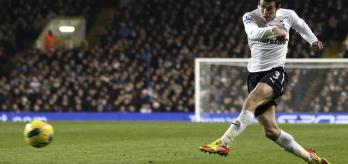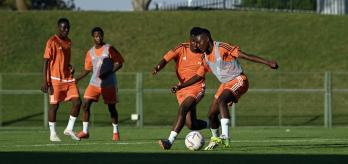"Scanning" is defined by Dr Aksum and his colleagues as the act of making a deliberate head movement away from the ball to obtain information about areas of interest, such as the positions of team-mates or opponents. Scanning has received increased attention in the game recently, as it is perceived to be an important skill to develop in elite players. In this video, Dr Aksum briefs us on a paper examining scanning trends in elite youth players and reveals the study's implications for performance, player and team development, in addition to further avenues of research.
Key take-aways
-
The intensity of pressing influences scan frequency; the tighter the opposition's press, the less often the player in possession scans the pitch.
-
Scanning frequency influences specific areas of performance, such as pass completion and forward body positioning.
-
There are significant positional differences in scanning frequency. Coaches need to create position-specific training drills to develop the scanning capabilities of players all over the pitch.
-
Scanning frequency increases throughout a player's youth development. As a result, coaches should view scanning behaviour as an integral part of player and team development.
Watch brief
Read summary
Part 1: Methods and findings
Using high-quality footage from a 4K video camera, the research team recorded the semi-finals and finals of the 2018 UEFA men’s European U-17 and U-19 Championships. They then analysed the 53 outfield players from the four teams that played in the finals of those two tournaments. Between them, these players produced 1686 individual ball possessions, which the researchers used to calculate the players' scan frequency and timing. One of the most interesting findings from this process was that pressing intensity has a negative influence on scan frequency; in other words, as the press gets tighter, the player in possession scans the pitch less often.
Part 2: Discussion and implications
The study has both theoretical and practical implications. For instance, Aksum explains that the link the study establishes between the timing of the player's last scan and the way they position their body afterwards is of theoretical significance, as it adds to the discussion on decision-making in football. Specifically, it illustrates that perception (scanning) and action (changing body orientation) are intertwined, and the way a player executes decisions in a game can be understood in terms of this link between perception and action. As an example of the practical implications of the research, Aksum cites the finding that players in the U-19 final scanned more often than players in the U-17 final, suggesting that scanning frequency increases with age. With this in mind, Aksum emphasises that coaches should view scanning as a skill that should be cultivated throughout the talent pathway.
Paper citation and link
Aksum, K.M., Pokolm, M., Bjørndal, C. T., Rein, R., Memmert, D. & Jordet, G. 2021, “Scanning activity in elite youth football players”, Journal of Sport Sciences, vol. 39, no. 21, pp. 2401-2410.
Read the full paper here.















